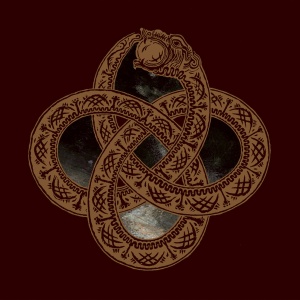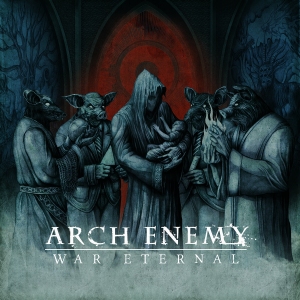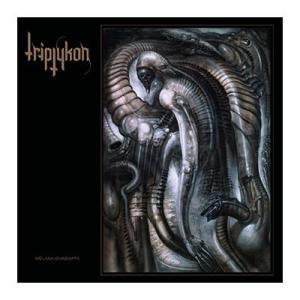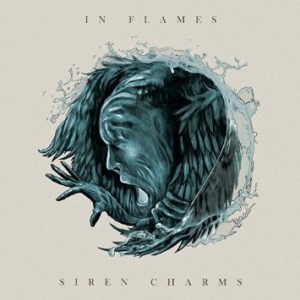It was a year of extremes. I experienced pure bliss as well as soul-shattering loss. So I spent the end of 2014 and the first chunk of 2015 on my ancestral isles, mourning, feeling, being, surrounded by beauty and purity, far from the wickedness in the world. There, strange forces held me together when my whole being was falling apart. Perhaps it was the Fae magick of my clan. Maybe it was my own inner strength, heightened by connection to Viking roots. It might have been a combination of both. I know better than to question those things. I accept them with gratitude.
To borrow a phrase from Judas Priest (more about them later), 2014 delivered the goods, musically speaking. At the start of 2014 I predicted the year’s top four albums (although I didn’t attempt to forecast my order of preference). I predicted correctly. The great Hillhouse Seer Tam the Bammus would be impressed (if that reference went over your head, read my short(ish) story Revelation Was Wrong and you’ll be illuminated). For the first time, there’s a tie for my album of the year. In each previous year one release stood head and shoulders above the others. This year there were two.
1= Nimbatus – Realm of Darkness Nimbatus instrumentals transcend metal’s usual formulaic blueprint. These compositions are more than mere tracks: they’re vast swathes of sound – crunching heavy riffs juxtaposed with sublime lead-guitar refrains, sweeping keyboard melodies and laser-precise drum beats. Flourishes of strings and piano add poignance to melodies that are already loaded with emotion. Unlike most metal instrumentalists, Nimbatus never veers into musical widdling/wanking/noodling territory. Nothing is superfluous. Each note carries emotion. Not a moment is wasted. Every detail of Realm of Darkness – composition, musical execution, guitar tones, track titles, production quality – is flawless. Nimbatus’s mission statement is to create instrumental songs that translate darkness and sadness into music. Job done. And the results sound beautiful. Don’t go looking for Nimbatus music on Amazon or at your local high-street record shop. You won’t find it there. Go to bandcamp or reverbnation websites and you’ll find all the Nimbatus releases. And do yourself a favour – download the tunes in FLAC format for listening to in the house, either streamed or burned onto disc. That way you’ll hear the music in all its brilliance. Mp3 files are handy for listening to on the move, but they’re low quality and a third of the overall sound is missing. This music deserves to be heard properly. Play loud.
Favourite track: it’s almost impossible to pick one, as they’re all ridiculously good. At a push, I choose Nocturnal Ride. Like my favourite Nimbatus track of all (Tales of the Ageless, from debut album Cyclus One), Nocturnal Ride delivers what I’ve come to know as the Nimbatus surprise: just when it seems that the track is about to finish, a new melody soars from out of nowhere, taking the tune to heights so awe-inspiring that my body hair stands up in salute.
1= Insomnium – Shadows of the Dying Sun
For most of 2014 this was my album of the year. (Insomnium released Shadows of the Dying Sun when the year had just begun, while Nimbatus sneaked out Realm of Darkness as 2014 drew to a close.) Insomnium albums have twice before topped my annual chart (Above the Weeping World in 2006 and One for Sorrow in 2011), so I had high hopes for Shadows of the Dying Sun. It didn’t disappoint. Building on the Finnish melodic-death-metal sound that Insomnium created and honed, the album explores new territory. Ville Friman makes more use of clean vocals than on previous albums, and to great effect (the clean vocals are often sung simultaneously with Niilo Sevänen’s trademark growled words – an effect that adds a new dimension to Insomnium’s sound). Some tracks remind the listener that Insomnium can still be – when they choose – the heaviest band on the planet (check out The Gale – intro to the Above the Weeping World album – for historical evidence of this…and turn it up loud). As on other Insomnium recordings, the band never sacrifices melody for bluster. Even when Markus Hirvonen’s blast-beat drumming borders on inhuman, Niilo’s bass rumbles like the bowels of Satan after a dodgy curry, and the twin guitars of Ville Friman and Markus Vanhala rip holes in the egos of many other axemen, the overall sound is always richly melodic. Delicacy is as prevalent as crushing heaviness. This is the soundtrack to ice, cold, solitude, fortitude and inner strength: breathtaking compositions by innovators who have forged a sound truly their own.
Favourite track: opener The Primeval Dark, both an intro and a song in its own right, delivers a slow-building melody – eerie and ominous – that builds into a wave of astonishingly resonant riffage. Huge.
3. Agalloch – The Serpent and the Sphere
One of the most underrated acts around, Agalloch is also one of the few non-Scandinavian bands to dabble in black metal without being discounted by their European counterparts, who invented and pioneered the genre. Agalloch doesn’t restrict its music to any one style, though. Nowhere (with the exception of 2008’s The White EP, inspired by classic 1973 Scottish horror film The Wicker Man, and incorporating much piano, acoustic guitar and movie snippets) is this more evident than on The Serpent and the Sphere. I love the multi-layered depth of this album. It’s the evolution that was hinted at on all the band’s previous full-length recordings. John Haughm and his cohorts have matured into a musical force to be reckoned with.
Favourite track: Dark Matter Gods.
4. Anathema – Distant Satellites I’ve loved Anathema’s music since their first EP, back when the band was a doom-metal outfit. Most bands find a style that works for them, then stick with it. Not so Anathema. More than any other band that started as an extreme-metal outfit, they have matured. As testament to this, their last three albums have more in common musically with Pink Floyd than with their doom-metal roots. Most bands would be afraid to change so radically, for fear of losing fans as a result. Vincent and Daniel Cavanagh write from the heart, though, not for sales figures. They express their vision so effectively – through music from the heart and lyrics deep in meaning – that its honesty resonates as much as its musical beauty. The Cavanagh brothers have grown as human beings. This is reflected in their music. Distant Satellites is my second-favourite Anathema album (after 2010’s We’re Here Because We’re Here – my top album of that year). The lyrical themes are profound (awakening, recognition, love, separation, loss), the music rich in heartfelt melody.
Favourite track: Ariel – one of the most beautiful compositions ever recorded.
5. Pink Floyd – The Endless River
Forget the pish written about this album by broadsheet journalists who don’t know their arses from their elbows when it comes to music. Most of them jumped straight onto the ‘this is a bunch of outtakes rather than a proper album’ bandwagon. I wish so-called writers would listen to music with open ears and minds, ignoring the opinions of others, in order to form their own unbiased opinions. That’s how folk with integrity operate. So here’s my opinion as a longtime Floyd aficionado with integrity and an open mind. I don’t care if the recordings on The Endless River weren’t originally intended to be put together onto one release. Most albums – with the exception of concept albums – are a jumbled assortment of tracks that don’t have any relevance to each other but often work well as a collection of individual pieces. The Endless River works well as such a collection, yet it has been arranged to flow together beautifully. The album is a tribute to Floyd’s fallen band member Richard Wright, whose keyboards are high in the mix throughout. This is fitting. It reminds the listener that while Wright may not be walking the world anymore, his sounds are left behind, eternally resonating. It’s difficult to listen to The Endless River without becoming acutely aware of this. The songs are subtle, thematic, richly layered and gorgeously melodic, close to The Division Bell’s compositions in terms of structure. Seasoned Floyd listeners will recognise tips o’ the hat to several older PF songs. The album is a wall (pun intended) of ambient melodies and perfectly executed instrumentation.
Favourite track: Louder Than Words: the only track to feature a David Gilmour vocal. Lyrics explore the much-publicised animosity within the group, concluding that the end result of their arguments – the music they create – is worth suffering for. “We bitch and we fight, diss each other on sight, but this thing we do…These times together, rain or shine or stormy weather, this thing we do…it’s louder than words, this thing that we do, louder than words, the way it unfurls. It’s louder than words, the sum of our parts. The beat of our hearts is louder than words.” Truth. From somewhere, Richard Wright is looking down and smiling. Thank you for the music, sir. I miss you.
6. Within Temptation – Hydra
I’ve recognised Within Temptation’s talent since their earliest incarnation but until Hydra their albums were patchy affairs that contained moments of brilliance alongside uninspired music-by-numbers compositions. There was never a problem with the band’s musical or vocal ability. They are all accomplished musicians and Sharon den Adel’s voice has always been phenomenal. She even achieved what I’d thought impossible (covering a Kate Bush song and improving it). Hydra is the first Within Temptation album to live up to the band’s immense potential. About time. It was worth the wait. A masterpiece.
Favourite track: Let Us Burn – symphonic metal at its most anthemic.
7. Arch Enemy – War Eternal
Michael Amott rarely makes mistakes in music. A consummate musician with immaculate taste, his various bands ooze quality and originality. I worried when Angela Gossow left Arch Enemy, as her growled vocals – which put most male death-metal vocalists to shame – were an integral part of the band’s sound. Amott followed Nightwish’s example (when operatically trained vocalist Tarja Turunen left Nightwish, they replaced her with a female whose vocal style was considerably different, surprising those who expected the band to employ another opera diva as a Turunen clone). In the case of Arch Enemy, the new female vocalist was Alissa White-Gluz, formerly of The Agonist. She has neon-blue hair. That’s a good start. What about her vocals, though? Alissa’s voice is less demonic than that of predecessor Angela Gossow, but her rasp gels perfectly with Arch Enemy’s music. Alissa is more girly than Angela (although in the arena of melodic death metal, girliness is a subjective term). Angela Gossow looks like she’d ride you all night long, tearing your flesh open with her nails before throwing your bleeding body out the window in the morning. Alissa White-Gluz looks like she’d beg you to ride her all night long, then she’d make you toast and a cup o’ tea in the morning. Different styles, both good. Anyway, back to the music. War Eternal is a heck of an album. Amott’s compositions are, as usual, inspired. At several points Amott’s more sedate playing is reminiscent of The Scorpions’ Rudolf Schenker. Instrumental Not Long for This World is even crafted around the tune of Scorps ballad Still Loving You. Amott’s speedier shredding could be mistaken for Children of Bodom’s Alexi Laiho. This is very much a guitar-driven album, but the other musicians leave their mark on these tunes too. Like Nightwish, Arch Enemy lost an iconic figurehead and replaced her with someone stylistically different. Also like Nightwish, Arch Enemy has evolved into a new – yet equally impressive – animal.
Favourite track: War Eternal – a perfect mix of tasteful riffage and fierce vocals.
8. Triptykon – Melana Chasmata Tom G. Warrior’s influence in metal is enormous. The seminal Hellhammer was – along with England’s Venom and Sweden’s Bathory – responsible for spawning black metal and later ushering in the Second Wave of Black Metal in Norway. Second wave bands’ extracurricular activities – violence, murder and church-burning – brought black metal to the attention of the world’s media, but while Warrior may have inadvertently co-created a genre, his violence was limited to lyrics: he was all about the music. Warrior’s next band, Celtic Frost, influenced the thrash movement in immeasurable ways. The early Celtic Frost albums (along with those of Germany’s Kreator) are the most original recordings of that ilk. Triptykon is the logical progression of Celtic Frost, containing some of the same members. Their second album, Melana Chasmata, eschews the restraints of genre in favour of communicating Warrior’s musical vision in the purest way possible. It’s a dark album which, like Celtic Frost’s Into the Pandemonium, balances brutally heavy passages with ambient sections that feature ethereal female vocals. Cover art is the 1975 piece Mordor VII by H.R. Giger (the third time Giger has collaborated with Warrior: he provided cover art for Triptykon’s debut album Eparistera Daimones and Celtic Frost’s classic To Mega Therion).
Favourite track: Boleskine House. (Situated on the shores of Loch Ness, Boleskine House was home to Aleister Crowley, ‘the wickedest man in the world’, who carried out countless esoteric magickal rituals there. Led Zeppelin guitarist Jimmy Page, lured in by the house’s dark past, bought it after Crowley’s death.)
9. In Flames – Siren Charms
In Flames pioneered the much-copied ‘Gothenburg sound’. On Siren Charms the Swedes stay true to the musical blueprint they created – immense energy levels, eviscerating riffs, wall-crumbling bass, precision drumming, and Anders Fridén’s superb vocals, which alternate between low growls and soaring clean tones. Siren Charms blends heaviness and melody, delicacy and blunt-force attack.
Favourite track: Rusted Nail.
10. Accept – Blind Rage
Many longtime metal fans have written off Accept time after time, first when Udo Dirkschneider left the band, then when he returned, then when he left again, and so on. I’ve never done so. I always recognised the musical excellence of the others in the band, particularly Wolf Hoffman, whose ability to compose metal anthems is rivalled by his talent for dishing them out on guitar. Having delivered one of metal’s greatest comeback albums in 2010 (Blood of the Nations, the first Accept recording to feature vocalist Mark Tornillo) and another barnstorming release in 2012 (Stalingrad), Accept continued their upsurge with Blind Rage in 2014. Classic metal from start to finish – anthemic, catchy and loaded with hooks.
Favourite track: From the Ashes We Rise – quintessential Accept.
11. Judas Priest – Redeemer of Souls Judas Priest is one of the bands that delivered the metal goods to me back when I was barely out of nappies. They changed my life for the better. To many, Judas Priest is the definitive metal band. Certainly, and inarguably, they are responsible for the studs-and-leather image that came to be metal’s hallmark. (Little do most folk know that this came about because JP’s vocalist, Rob Halford, bought clothes and accoutrements from gay boutiques…but that’s another story.) Redeemer of Souls had the same impact on me as its two immediate predecessors, Angel of Retribution and Nostradamus: some tracks came across as timeless and inspired, while others sounded (and I hate to use this term to describe anything by a band as special as JP, but it’s my honest opinion) a bit generic. Because JP recorded iconic albums such as Screaming for Vengeance, Defenders of the Faith and British Steel, which are perfect from start to finish, I expect a lot of this band. I expect perfection. I know they’re capable of it. I’ve been hearing them deliver musical perfection (and watching them do so live) since I was a wayward child. So while Redeemer of Souls is an excellent album, it’s not a classic Priest album. This band has a monumental legacy to live up to with any new recording. The album’s high points, and there are several, make it an essential possession for any JP fan. Halford’s voice is astonishing, as always. Not for nothing is he known as The Metal God. Richie Faulkner took on the enormous task of filling KK Downing’s shoes as Glen Tipton’s fellow Priest axeman. He has done so with confidence and excellence, both on this recording and in the live arena.
Favourite track: Cold Blooded.











Leave a comment